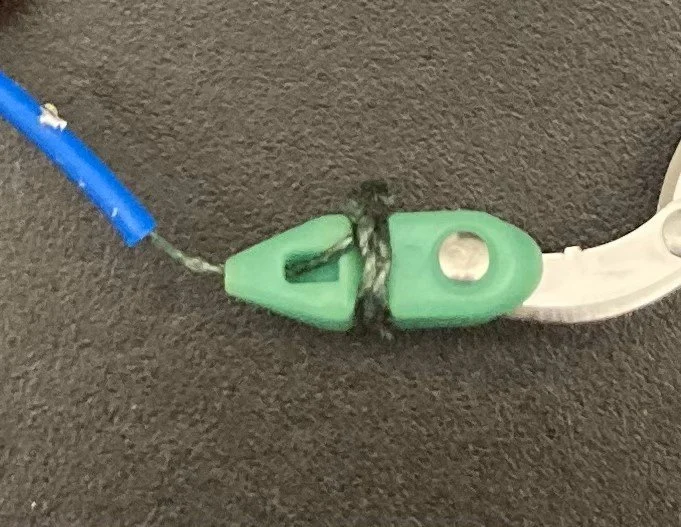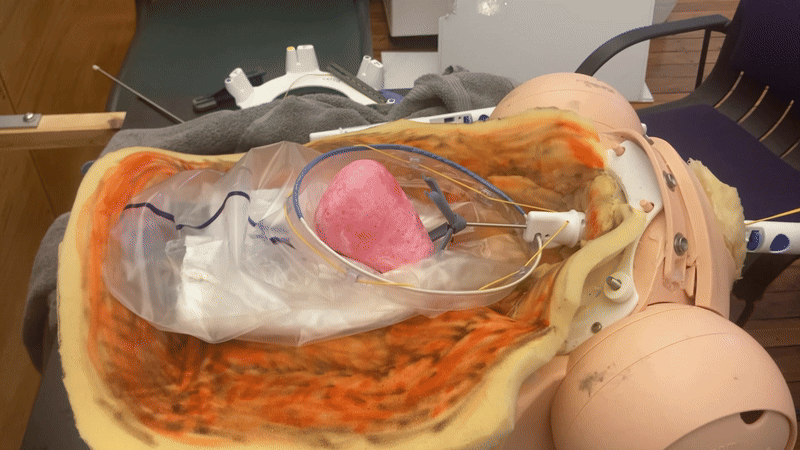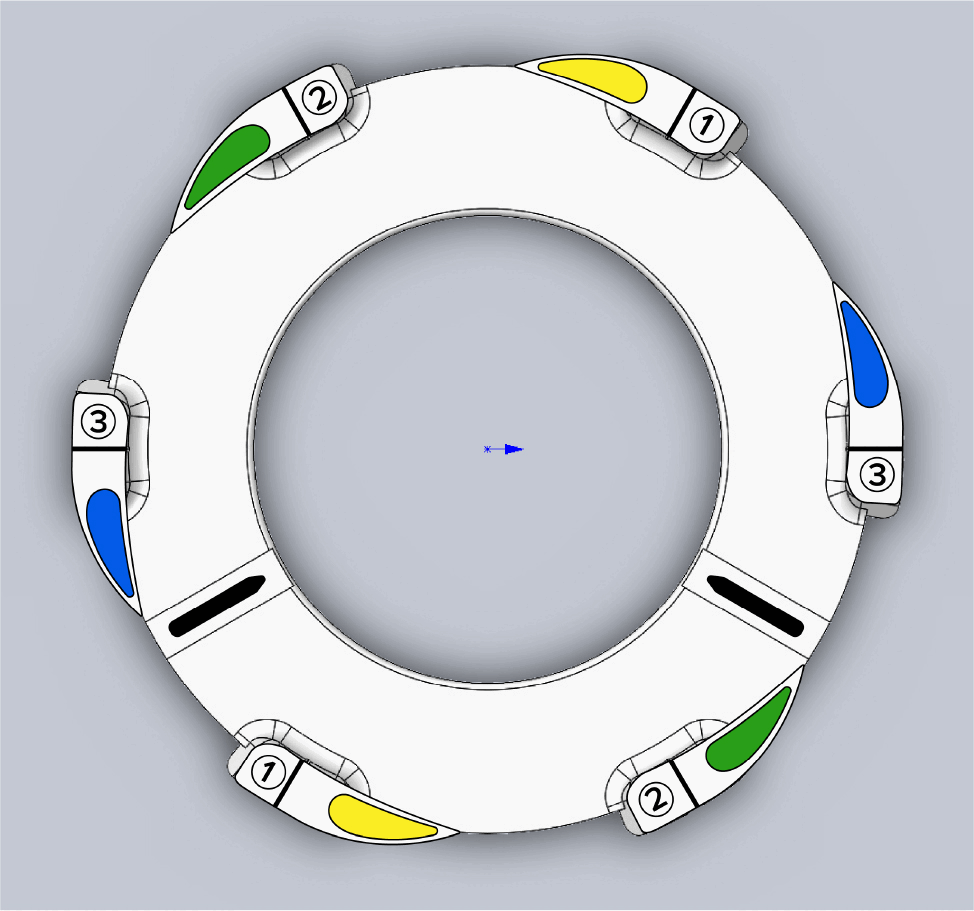Lattis Surgical device by Freyja
Invented by renowned gynecological surgeon Jon Einarsson, Lattis is a fibroid/uterus removal device. Lattis aims to make both procedures less skill and time intensive. Currently, during the removal of fibroids and uteri, surgeons employ manual morcellation. The disadvantage being that if the tissue contains cancerous cells, the morcellation poses an opportunity to spread those cells.
The Lattis system consists of three parts: introducer, pouch, and platform. The pouch is inserted into the patient via the vaginal canal using the introducer. Once the specimen is situated within the pouch, the introducer is removed and the opening of the pouch is externalized. The platform is then placed over the opening of the pouch in order to secure the pouch for cutting the specimen. The specimen is then cut using four cutting lines and the parts are removed from the pouch. The surgeon externalizes the rest of the pouch and proceeds to finish the surgery.
Pouch
Blade Connector
The cutting force of Lattis consists of four chains of seven stainless steel blades riveted together and bound to woven lines of Spectra. The Spectra is thread through 4 different colors of PTFE to differentiate during cutting. An issue arose during testing wherein the PTFE shrinks back, exposing the Spectra to being cut. Combined with the bulky shape of the green blade connector, the lines were getting stuck during the process of cutting through the specimen. I redesigned the connector to have a streamlined shape, and to retain the PTFE itself to combat stretching.
Cutting Tunnel
Through testing, we received feedback that cutting lines were deflecting to the side of the specimen before engaging into the tissue. I developed a guiding tunnel with the aim to shorten the distance the lines could deflect during cutting. These tunnels underwent many iterations throughout their development. The main avenues of development were rigidity, shape, and size. Due to the spectrum of specimen size, it made sense to make the tunnels flexible so they form to the shape of the specimen.
Tether
An important aspect of the process is securing the specimen within the pouch. During the procedure, the surgeon is operating in pseudo-blindness. It is important to give them control and tactile feedback to work alongside the small scope of vision supplied by surgical cameras. The purpose of the tether is to close the mouth of the pouch and allow the surgeon to secure the specimen in the bottom of the pouch for cutting. I was inspired by the mechanics of a fish mouth and devised a method for the opening ring of the pouch to pivot upright when the tether is pulled.
Platform
The platform is an organizational device that is used during specimen cutting. The opening of the pouch is fed through the middle of the platform and each cutting line is pulled into its respective slot. It was important throughout the design process to use minimal wording in order to streamline the use of the device in a surgical setting. I ideated many graphical layouts for the platform to inform the correct usage by the user.









